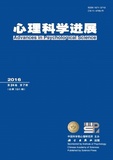Adolescent Self-Rating Life Events Checklist (ASLEC), Post-earthquake Injury Severity Self- constructed Questionnaire and Post-Traumatic Stress Disorder self-rating scale were applied to 413 Middle school students of earthquake zone. This research explored effects of pre-earthquake life stress events and injury severity on Post-Traumatic Disorder symptom. The results showed that the symptoms of PTSD have significant gender effects, girls higher than boys. Relation among pre-earthquake life events, post-earthquake injury severity and the total response-related PTSD symptoms were significant. Study pressure, the degree of exposure and loss have significant positive impact on re-experience. study pressure, be punished, others and the degree of exposure and have significant positive impact on avoidance; study pressure, the others, and exposed the extent of the loss of numb and avoid have a significant impact; in control of the degree of injury severity, pre-earthquake life events on symptoms of PTSD still have a significant impact




